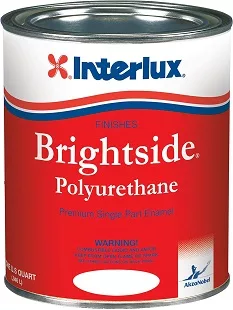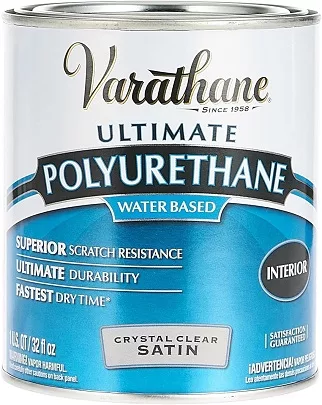
Suppose you own hardwood floors in your home. In that case, you know precisely how difficult it is to take care of wooden objects. It is hectic to make them look raw and glossy, isn’t it?
So, you decide to put shellac on your wood. Because you heard that putting shellac on your wood will make your furniture look eccentric and wealthy.
After a while, you notice your wood is stained from water spills. Yes, you got that right. Shellac doesn’t protect your wood from water, and shellac isn’t long-lasting either!
A world of sorrow comes crashing on you. Yet, you want to apply a perfect finish to your wood. But which one is the perfect finish? For example, can you apply polyurethane over shellac? And even if you can, which one is the best?
Don’t worry because we’ve got all of it covered. Let’s dive right into the answers to your questions!
What Are Shellac And Polyurethane Exactly?
Before we get into your questions, we must first acknowledge what exactly shellac and polyurethane are.
Let’s clear up about the features of the finishes, shall we?
Shellac
Shellac is a natural product. If it’s mixed with alcohol, it can be used as a finish. However, there are pros and cons of using shellac as a finish for your hardwood object.
If you want your wood to appear appealing and vibrant, shellac is the best option. The color adheres to the shellac perfectly. In addition to this, shellac is a safe option because it contains non-toxic chemicals.
However, there are downsides to using shellac also. If water and alcohol spill onto your shellac finish, then the surface begins to dissolve, ruining your furniture.
Furthermore, a white ring-like shape starts appearing when hot pans or mugs are put on the shellac finish surface.
So, it is advised not to put a shellac finish on the wooden kitchen top or tabletop.
Polyurethane
Recently, polyurethane has become the go-to finish for almost everyone. It can be best described as a “fluid form of plastic.”
There are two forms of polyurethane- oil-based and water-based.
Water-based polyurethane comes with the feature of slight odor and low toxicity. On the other hand, oil-based poly offers more longevity than water-based poly.
Water-based dries up faster than oil-based. Oil-based poly adds a luminous glare to the wood.
Polyurethane is resistant to water and heat. Although water-based is not as long-lasting as oil-based, water-based is still more durable than shellac.
Therefore, it is suggested to apply a polyurethane finish on your adored wooden material.
Now, let’s delve into the real question.
Can You Put Polyurethane Over Shellac?
We have acknowledged that polyurethane is a better finish than shellac, but is it recommended to apply poly over shellac?
The answer is both yes and no. How? It depends on the type of shellac finish.
1. Polyurethane Over Waxed Shellac
It is recommended that you shouldn’t put poly over waxed shellac. It is because polyurethane usually doesn’t stick to waxed shellac.
Regular shellac is most likely to be waxed shellac. The topcoat needs to be melted over the wax to put something over the waxed shellac. Moreover, polyurethane cannot mix or blend with something.
Hence, polyurethane can’t stick to the waxed shellac, and this mixture fails to produce the beautiful, lavish wood you had anticipated.
2. Polyurethane Over De-Waxed Shellac
Whether it is oil-based or water-based poly, it will adhere to dewaxed shellac. As poly looks for physical adhesion, dewaxed shellac can stick physically with any of the topcoats.
Interestingly enough, dewaxed shellac is also used for the coating between stain and poly. That is because it creates a strong bond coat.
Thus, if you want a lasting and polished-looking wood, you can apply poly over dewaxed shellac.
How Can You Put Polyurethane Over Shellac?
Though it is not suggested to apply poly over waxed shellac, you can apply poly over dewaxed shellac. To do that, first, you must know what the steps to put poly over shellac are.
We already know that shellac can bring a perfect finish to your wooden furniture. However, for the downsides of shellac, you might want to use a polyurethane finish to increase the durability of your wood.
Now, let’s look at the steps on how you can apply poly over shellac.
Dilute Shellac With Alcohol
You have to mix the shellac with alcohol to put it onto the wood first. Then, you may calculate the required volume of shellac and alcohol based on the dimensions of your wood.
Brush The Mixture
You can use a hairy brush to put shellac onto the wood. Dip the brush into the dilution and brush back and forth on your wooden material.
Sand The Surface
You have to sand to wipe away any dust, dirt, or oil from the wood. In that case, you can use a sandpaper to do the job too.
Apply Polyurethane
Now, you have to apply a coat of polyurethane with a clean brush or cloth. If you use water-based, it won’t take much time to cure. In contrast, oil-based poly will take plenty of time to dry.
You have to wait before the first coat cures.
Repeat The Previous Two Steps
After the first coat dries, you have to sand again. Then you can apply a second coat of poly.
You must apply 3-4 layers of a coat of polyurethane to get the best results.
Which is The Suitable Polyurethane Finish For Shellac?
You now know that polyurethane finish is the best thing that can happen to your hardwood floors. So, you decide to go out and buy some for your furniture. Hold on!
There are tons of brands out there in the market, and buying can be challenging. However, not getting the best one will surely yield a lousy look on your furniture, wasting time and money.
So, we did our research and came up with a few of the best brands of polyurethane for you to choose from. But, first, let’s look at some of the top-notch finishes that consist of polyurethane.
Interlux Brightside Poly Paint – 1 Quart

This unit comes with a diverse set of colors. It gives a gorgeous sheen and sparkle look on your wood.
Rust-Oleum Varathane Interior Satin Finish – 1 Quart

If you want a durable and rigorous finish on your wood, this is your go-to product. This product dries up in no time and gives excellent efficiency to work with. Additionally, you can easily clean it with soap and water.
Minwax Fast-Drying Clear Gloss – 1 Quart

This one extracts the raw beauty from your wood and amplifies it tenfold. It protects your wood from marks and stains. If you own lavishing a grand set of furniture and want to bring the best out of it, look no further.
FAQ
What’s The Difference Between Shellac And Polyurethane?
Shellac is extracted from natural resin. At the same time, polyurethane comes from artificially produced products.
Polyurethane is more water and heat-resistant compared to shellac. Poly is more durable as well.
While shellac can adhere to various colors, oil-based poly comes with a yellowish color.
Do you Sand The Final Coat Of Polyurethane?
No, you don’t have to sand the final coat of poly. Instead, after the final coat is applied, you let the polyurethane dry, and it’s finished!
You don’t have to worry about it anymore after the poly is cured.
Final Words
While it’s not suggested to put poly over waxed shellac, you can smoothly apply poly over dewaxed shellac. Moreover, it has been said that dewaxed shellac covers all coats.
You can put any coating over or under the shellac, and it will adhere to the shellac thoroughly.
Polyurethane is one of the most delicate finishes there is in the market at the moment. Hence, if you have a shellac finish over your wooden material and want a crisp sheen look from the furniture, you know what to do!
Now it’s your turn whether you’ll apply poly over shellac or not. First, go through the instructions mentioned above if you are still feeling uncertain about what to do.
Make decisions based on the types of your wooden material or furniture. Hope you found out if you can put polyurethane over shellac.
